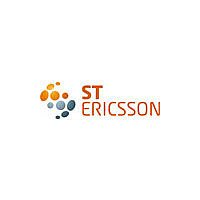ISP1761ET-S ST-Ericsson Inc, ISP1761ET-S Datasheet - Page 17

ISP1761ET-S
Manufacturer Part Number
ISP1761ET-S
Description
IC USB OTG CONTROLLER 128TFBGA
Manufacturer
ST-Ericsson Inc
Datasheet
1.ISP1761BEUM.pdf
(164 pages)
Specifications of ISP1761ET-S
Controller Type
USB Peripheral Controller
Interface
Serial
Voltage - Supply
3 V ~ 3.6 V
Operating Temperature
-40°C ~ 85°C
Mounting Type
Surface Mount
Package / Case
128-TFBGA
Lead Free Status / RoHS Status
Lead free / RoHS Compliant
Current - Supply
-
Other names
568-3160
Available stocks
Company
Part Number
Manufacturer
Quantity
Price
- Current page: 17 of 164
- Download datasheet (768Kb)
NXP Semiconductors
Table 3.
ISP1761_5
Product data sheet
Port configuration
One port (port 1)
One port (port 2)
One port (port 3)
Two ports (ports 1
and 2)
Two ports (ports 2
and 3)
Two ports (ports 1
and 3)
Three ports (ports 1,
2 and 3)
Port connection scenarios
7.2.1 General considerations
7.2 Host controller buffer memory block
Port 1
DP and DM are routed to USB
connector
DP and DM are not connected
(left open)
DP and DM are not connected
(left open)
DP and DM are routed to USB
connector
DP and DM are not connected
(left open)
DP and DM are routed to USB
connector
DP and DM are routed to USB
connector
Port 2 does not need to be enabled using software if only port 1 or port 3 is used. No port
needs to be disabled by external pull-up resistors, if not used. The DP and DM of the
unused ports need not be externally pulled HIGH because there are internal pull-down
resistors on each port that are enabled by default.
Table 3
The internal addressable host controller buffer memory is 63 kB. The 63 kB effective
memory size is the result of subtracting the size of the registers (1 kB) from the total
addressable memory space defined by the ISP1761 (64 kB). This is an optimized value to
achieve the highest performance with minimal cost.
The ISP1761 is a slave host controller. This means that it does not need access to the
local bus of the system to transfer data from the system memory to the ISP1761 internal
memory, unlike the case of the original PCI Hi-Speed USB host controllers. Therefore,
correct data must be transferred to both the Philips Transfer Descriptor (PTD) area and
the payload area by PIO (using CPU access) or programmed DMA.
The ‘slave-host’ architecture ensures better compatibility with most of the processors
present in the market today because not all processors allow a ‘bus-master’ on the local
bus. It also allows better load balancing of the processor’s local bus because only the
internal bus arbiter of the processor controls the transfer of data dedicated to USB. This
prevents the local bus from being busy when other more important transfers may be in the
queue; and therefore achieving a ‘linear’ system data flow that has less impact on other
processes running at the same time.
The considerations mentioned are also the main reason for implementing the pre-fetching
technique, instead of using a READY signal. The resulting architecture avoids ‘freezing’ of
the local bus, by asserting READY, enhancing the ISP1761 memory access time, and
avoiding introduction of programmed additional wait states. For details, see
lists the various port connection scenarios.
Rev. 05 — 13 March 2008
Port 2
DP and DM are not connected
(left open)
DP and DM are routed to USB
connector
DP and DM are not connected
(left open)
DP and DM are routed to USB
connector
DP and DM are routed to USB
connector
DP and DM are not connected
(left open)
DP and DM are routed to USB
connector
Hi-Speed USB OTG controller
Port 3
DP and DM are not connected
(left open)
DP and DM are not connected
(left open)
DP and DM are routed to USB
connector
DP and DM are not connected
(left open)
DP and DM are routed to USB
connector
DP and DM are routed to USB
connector
DP and DM are routed to USB
connector
© NXP B.V. 2008. All rights reserved.
ISP1761
Section
16 of 163
7.3.
Related parts for ISP1761ET-S
Image
Part Number
Description
Manufacturer
Datasheet
Request
R

Part Number:
Description:
IC FILTR/CODEC 14BIT AUD 30TSSOP
Manufacturer:
ST-Ericsson Inc
Datasheet:

Part Number:
Description:
IC FILTR/CODEC 14BIT AUD 30TSSOP
Manufacturer:
ST-Ericsson Inc
Datasheet:

Part Number:
Description:
IC USB HUB CONTROLLER HS 80-LQFP
Manufacturer:
ST-Ericsson Inc
Datasheet:

Part Number:
Description:
IC USB HOST CONTROLLER 128-LQFP
Manufacturer:
ST-Ericsson Inc
Datasheet:

Part Number:
Description:
IC USB OTG CONTROLLER 64-LQFP
Manufacturer:
ST-Ericsson Inc
Datasheet:

Part Number:
Description:
IC USB PERIPH CONTROLLER 64HVQFN
Manufacturer:
ST-Ericsson Inc
Datasheet:

Part Number:
Description:
IC USB HOST CTRL FULL-SPD 48HVQF
Manufacturer:
ST-Ericsson Inc
Datasheet:

Part Number:
Description:
IC USB CTRL HI-SPEED 64HVQFN
Manufacturer:
ST-Ericsson Inc
Datasheet:

Part Number:
Description:
IC USB CTRL HI-SPEED 64TFBGA
Manufacturer:
ST-Ericsson Inc
Datasheet:

Part Number:
Description:
IC USB CTRL HI-SPEED 64HVQFN
Manufacturer:
ST-Ericsson Inc
Datasheet:

Part Number:
Description:
IC USB CTRL SNGL CHIP 64TFBGA
Manufacturer:
ST-Ericsson Inc
Datasheet:

Part Number:
Description:
IC USB HOST/DEVICE CTRLR 64-LQFP
Manufacturer:
ST-Ericsson Inc
Datasheet:

Part Number:
Description:
IC USB CTRL HI-SPEED 128TFBGA
Manufacturer:
ST-Ericsson Inc
Datasheet:











